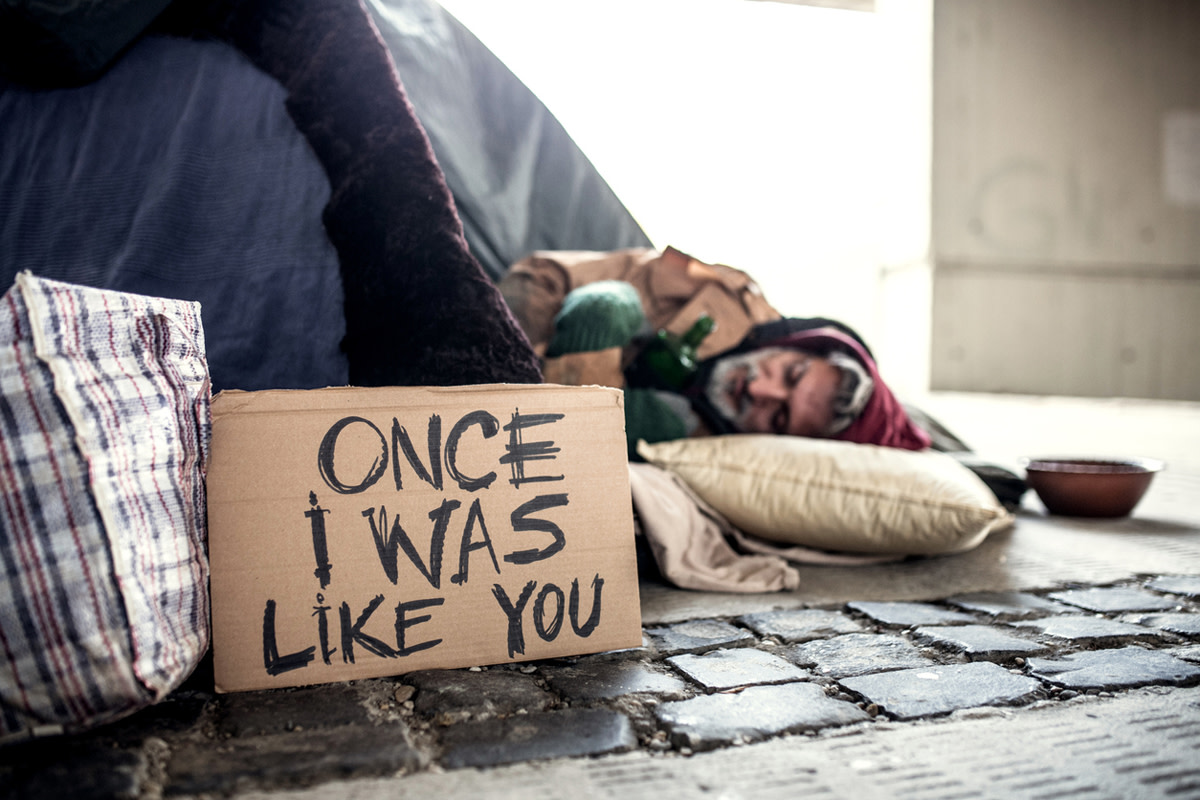Teen Homelessness and Poverty in Connecticut and the US

There is no question that adolescents suffer from a barrage of issues including yet not limited to peer pressure, family conflict, child abuse, sexual experimentation, drugs and alcohol, risky behavior and gambling, bullying, and even poverty and homelessness. With the advances in technology and more accurate studies in the medical field, it has become increasingly more important for teachers and school administrators to be aware of some of the reasons, effects, and consequences of the issues that their students have to deal with on a daily basis. In order to be effective educators, one must be an informed educator.
The important thing to remember is that the teachers and administrators a student may come in contact with at his or her school may be the only trusted adult that adolescent has in his or her life. Therefore, we must train ourselves to be those open and trustworthy adults who have our students’ best interest and wellbeing in the forefront of our minds.
Statistics
According to the Census Bureau and the criteria for being under the poverty threshold, in 2008 about 13.2% of Americans fell into the category of being in poverty. Most of those in poverty are households run by single women. 66% of children living in poverty live in a household run by a single parent.
Poverty not only can affect a child physically and endanger his physical wellbeing and safety, but it can affect the brain as well. Three factors are affected in brain development of children living in poverty: the child’s relationships, learning resources, and stress. In addition, toxic stress after the long-term pressures of poverty can disrupt the development of the brain, increase the risk for stress-related disease, and increase the risk of cognitive impairment.
Poverty often presents itself coupled with homelessness. Families make up 40% of the homeless population and this number is growing daily especially considering the economic downturn the country has seen over the past few years.
An often-overlooked homeless population is the homeless youth in America. According to the McKinney-Vento Act, the definition of homeless children and youth are "individuals who lack a fixed, regular, and adequate nighttime residence”, along with many other provisions. Although Connecticut may not be the hub of runaway and homeless youth, the National Center for Homeless Education reported that the 2008-2009 school year hosted 2,387 homeless youths in Connecticut. Sadly, it is difficult to measure the prevalence of homeless youth in America because many are unaccounted for specifically because they are not in a location where they can be easily counted, and often drop out of school.
Causes of Youth Homelessness
The most common causes of youth homelessness include:
- Poverty
- Lack of affordable housing
- Family conflict: physical/sexual abuse
- Decrease in government support
- Challenge of raising children alone
- Age out of foster care (30,000 a year)
- Sexual orientation
Consequences of Youth Homelessness
Some of the unfortunate consequences of homelessness include:
- Academic difficulties: suspension/expulsion
- Depression and suicide
- Pregnancy
- Mental health issues
- Chronic physical health: asthma, hypertension, tuberculosis, diabetes, hepatitis
- Substance abuse
- Difficulty with relationships
- Risk of abuse and neglect of own children
- Personality disorders
- Affects ability to learn
- Risky behavior
National Initiatives to End Homelessness
Just within the past few years under President Obama’s administration, the Federal Strategic Plan to Prevent and End Homelessness called Opening Doors was created with the goal of ending homelessness within 10 years. It looks for the most at risk youths and helps with stable health care, housing, and housing support.
The McKinney Vento Act started in 1983 as a task force that demanded the federal government recognize that homelessness was a national problem that required a national response. Out of the original task force came what is now known as the McKinney-Vento Act that includes Title VII. Title VII has the goal of improving educational outcomes and advocate for homeless youths. Each district is required to have a homeless liaison that acts as the middle man between the student and his or her rights to a Free and Appropriate Public Education (FAPE).
Some of the assurances and rights that homeless students are liable towards as stated in the McKinney Vento Act include:
(J) Assurances that-- (i) the State educational agency and local educational agencies in the State will adopt policies and practices to ensure that homeless children and youths are not stigmatized or segregated on the basis of their status as homeless;
(aa) the choice of schools homeless children and youths are eligible to attend, as provided in subsection (g)(3)(A); (bb) that no homeless child or youth is required to attend a separate school for homeless children or youths; (cc) that homeless children and youths shall be provided comparable services described in subsection (g)(4), including transportation services, educational services, and meals through school meals programs; and (dd) that homeless children and youths should not be stigmatized by school personnel;
(4) COMPARABLE SERVICES-Each homeless child or youth to be assisted under this subtitle shall be provided services comparable to services offered to other students in the school selected under paragraph (3), including the following: (A) Transportation services. (B) Educational services for which the child or youth meets the eligibility criteria, such as services provided under title I of the Elementary and Secondary Education Act of 1965 or similar State or local programs, educational programs for children with disabilities, and educational programs for students with limited English proficiency. (C) Programs in vocational and technical education. (D) Programs for gifted and talented students. (E) School nutrition programs.
A report was put out by the Education for Homeless Children and Youth, comparing data from the school years of 2006-2009 and how the McKinney Vento Act has affected homeless students’ educations and opportunities. The results of these findings can be found in the resources area below.
Local Connecticut Resources
In Connecticut there are several outreaches that will assist youth stricken by homelessness and poverty. One is Youth Continuum located in New Haven that provides mentoring, housing, job training, and a safe place for homeless youths to hang out.
The Jericho Partnership is a faith based organization that sends 70% of its funding to youths in the Danbury area. Partnering with Jericho is Pathways Academy; a middle school for at risk boys, all with the risk factor of poverty. Those at Jericho would agree that teachers and administrators should be excited about educating youths who are at risk, rather than getting frustrated by certain behavioral or emotional deficiencies a homeless youth may present.
The generational cycle of poverty can be stopped if a child realizes his potential and is assisted by trustworthy adults in his life to get out of the rut that poverty can push a family into. Such students need constant positive reinforcement, additional modifications such as extra time and extra help on assignments, and consistency in all aspects of school since their home life, or lack their of, is probably not consistent and reliable. Along with the McKinney Vento Act, individual teachers can make a difference in a child stricken by poverty and homelessness.





